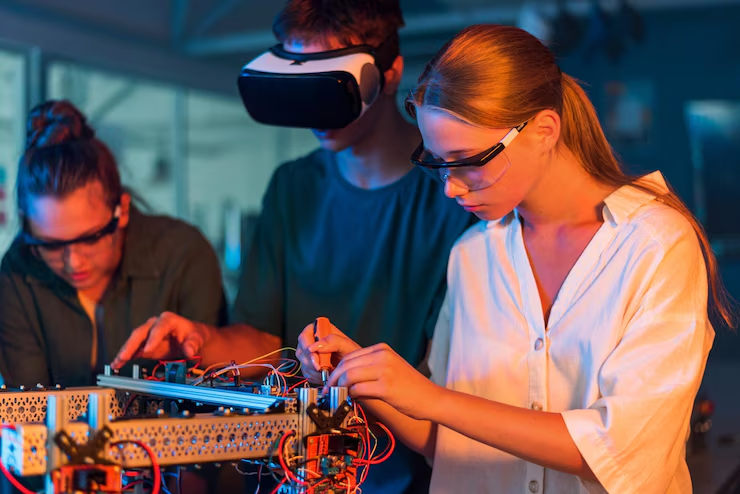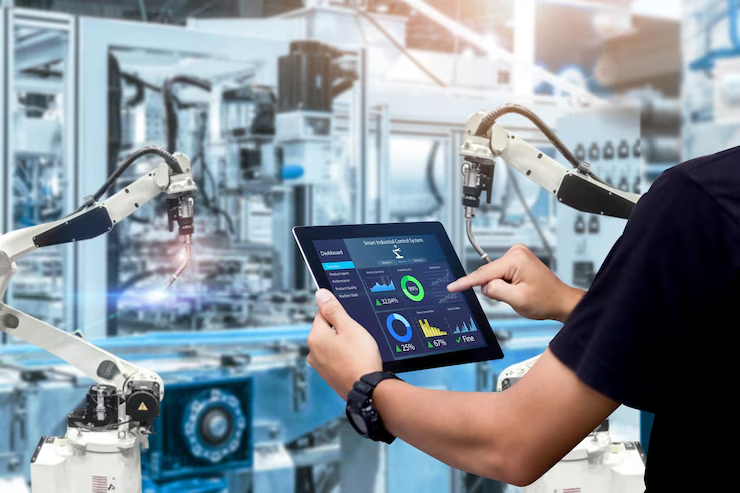Stevens Institute of Technology: Pioneering Innovation Since 1870

Nestled in the vibrant city of Hoboken, New Jersey, overlooking the Manhattan skyline, the Stevens Institute of Technology stevens institute of technology stands as one of America’s premier technological universities. With a rich history dating back to the 19th century, Stevens has continually evolved to meet the ever-changing demands of science, technology, engineering, and business. Known for producing some of the brightest engineers, entrepreneurs, and innovators, Stevens embodies a commitment to academic excellence, research leadership, and forward-thinking education.
Historical Overview
1.1 Founding and Legacy
Founded in 1870, Stevens Institute of Technology was named after Edwin A. Stevens, a member of the influential Stevens family, stevens institute of technology known for their contributions to American engineering and naval innovation. Edwin’s vision, realized posthumously through his will, was to create an institution dedicated to mechanical engineering education—at a time when such a field was still emerging in the United States.
Stevens Institute became the first college in America solely dedicated to mechanical engineering, marking a significant milestone in higher education. It started with a modest class and curriculum, emphasizing rigorous academics, practical applications, and a multidisciplinary approach.
1.2 The Stevens Family Impact
The Stevens family were visionary engineers and inventors. Edwin’s father, John Stevens, was instrumental in the development of the steamboat and the U.S. patent system. The family’s legacy shaped the university’s ethos—bridging theory and real-world application.
Academic Excellence

2.1 Undergraduate Programs
Stevens offers more than 35 undergraduate majors across four academic schools:
-
Charles V. Schaefer, Jr. School of Engineering and Science
-
School of Business
-
School of Systems and Enterprises
-
College of Arts and Letters
Popular undergraduate majors include:
-
Mechanical, Civil, Electrical, and Biomedical Engineering
-
Computer Science and Cybersecurity
-
Business Analytics and Finance
-
Quantitative Finance
-
Physics, Chemistry, and Applied Math
The curriculum is designed to be interdisciplinary, with an emphasis on hands-on learning, critical thinking, and innovation.
2.2 Graduate Programs
With over 40 master’s and doctoral programs, Stevens attracts a global cohort of graduate students. Key graduate fields include:
-
Artificial Intelligence
-
Data Science
-
Systems Engineering
-
Financial Engineering
-
Maritime Systems
Many graduate programs are offered in hybrid or fully online formats, accommodating working professionals.
2.3 The Cooperative Education Program
Stevens’ co-op program is one of the oldest in the country. Students alternate semesters between classroom learning and real-world work experiences, often graduating with a year or more of paid, relevant industry experience.
Research and Innovation

3.1 Research Centers and Labs
Stevens Institute of Technology is a Carnegie R2 research institution, recognized for high research activity. Its cutting-edge research centers include:
-
Davidson Laboratory – maritime and ocean engineering research
-
Center for Complex Systems & Enterprises – modeling of complex systems
-
Stevens Institute for Artificial Intelligence (SIAI) – AI and machine learning research
-
Maritime Security Center – Department of Homeland Security designated center
3.2 Major Areas of Research
Key areas of innovation at Stevens include:
-
Cybersecurity
-
Healthcare technology and bioengineering
-
Financial systems
-
Sustainable energy and infrastructure
-
Artificial Intelligence and machine learning
Stevens has received funding from government agencies like NASA, NSF, DARPA, and DHS, as well as private corporations.
Campus and Facilities

4.1 Campus Overview
The 55-acre urban campus of Stevens is located on Castle Point, offering panoramic views of New York City. Despite its city proximity, the campus offers a tranquil environment for study and recreation.
4.2 Cutting-edge Infrastructure
-
Academic buildings with smart classrooms
-
Labs equipped with high-performance computing
-
MakerCenter, an innovation lab for prototyping
-
The Hanlon Financial Systems Lab, simulating Wall Street trading floors
-
Living laboratories for sustainability research
4.3 Residential Life
Stevens offers a variety of on-campus housing options. The new University Center Complex, opened in 2022, includes state-of-the-art dormitories, study lounges, and dining options.
Student Life and Culture

5.1 Student Organizations
There are more than 150 student organizations at Stevens, including:
-
Professional societies (e.g., IEEE, ASME, ACM)
-
Cultural clubs
-
Media and arts groups (e.g., WCPR Radio, Stevens Dramatic Society)
-
Greek life
-
Robotics and esports teams
5.2 Athletics
A proud member of NCAA Division III, Stevens fields over 25 varsity teams, including:
-
Soccer
-
Basketball
-
Lacrosse
-
Swimming
-
Wrestling
The Stevens Ducks are known for their competitive spirit, and student-athletes excel both in academics and athletics.
5.3 Events and Traditions
Some cherished traditions include:
-
Boken Festival – a spring carnival event
-
TechFest – student technology showcase
-
StevensTHON – charity dance marathon
-
Senior Week – a rite of passage for graduates
Career Services and Alumni Network
6.1 Career Outcomes
Stevens consistently ranks among the top universities for return on investment (ROI). Within six months of graduation, over 95% of graduates are employed or enrolled in graduate school.
Top employers include:
-
Google
-
Goldman Sachs
-
Lockheed Martin
-
JPMorgan Chase
-
Pfizer
-
IBM
-
Amazon
6.2 Alumni Network
The university boasts an alumni base of over 40,000, many of whom hold leadership roles in technology, finance, academia, and government.
Notable alumni include:
-
Frederick Winslow Taylor – Father of scientific management
-
Henry Gantt – Creator of the Gantt Chart
-
Alexander Calder – Renowned sculptor and inventor of the mobile
-
Frank Semcer – CEO, MICRO
-
Greg Gianforte – Governor of Montana and tech entrepreneur
Diversity and Inclusion
7.1 Campus Initiatives
Stevens actively promotes inclusivity through:
-
Office of Diversity, Equity and Inclusion (DEI)
-
Women in Engineering (WiE) programs
-
LGBTQ+ Resource Center
-
First-Generation Scholars program stevens institute of technology
Scholarships and mentoring initiatives support underrepresented groups in STEM.
7.2 Global Community
International students make up around 20% of the student body. With students from over 50 countries, the Stevens community is both global and collaborative.
Strategic Vision and The Future
8.1 Stevens 2032 Plan
Stevens is actively pursuing its “Stevens 2032: Inspired by Humanity, Powered by Technology” strategic plan. Key goals include:
-
Expanding student enrollment while maintaining quality
-
Enhancing campus facilities
-
Becoming a top-tier research university stevens institute of technology
-
Deepening industry partnerships
-
Promoting environmental sustainability
8.2 Technological Foresight
The university aims to lead in the following transformative areas:
-
Quantum computing
-
AI Ethics and regulation
-
Sustainable engineering solutions
-
Fintech and digital currencies
-
Personalized healthcare systems
Global and Local Impact stevens institute of technology
9.1 Community Engagement
Stevens students and faculty regularly engage in:
-
K-12 STEM outreach
-
Urban planning projects in Hoboken
-
Volunteer disaster response
-
Mentoring programs for underserved youth
9.2 International Collaborations
Through academic exchanges and research agreements, Stevens collaborates with institutions in:
-
Germany
-
Singapore
-
India
-
South Korea
-
United Kingdom
Conclusion
Stevens Institute of Technology is more than a technological university—it is a hub of innovation, collaboration, and societal transformation. With a unique blend of tradition and cutting-edge thinking, Stevens prepares students not just to succeed in today’s world but to shape the world of tomorrow stevens institute of technology.
From its historic beginnings in 1870 to its future-forward vision for 2032 and beyond, Stevens remains a vital force in science, engineering, and business education. Whether you’re an aspiring student, a tech enthusiast, or a global innovator, Stevens offers a dynamic community where ideas ignite, technologies flourish, and leaders emerge.



marijuana shipping europe with secure discreet packaging
app 888slot Một ưu điểm hoàn hảo tại nổ hũ Fun 88 đó chính là giao diện vô cùng bắt mắt, đẳng cấp cùng luật chơi rõ ràng. Một số sản phẩm siêu hút chân cộng đồng cược thủ có thể kể đến như ăn khế trả vàng, kho kháu tứ linh, ngọn lửa chibi, long quy chi bảo,…
slot365 login link Sau khi hoàn tất việc điền thông tin, bạn sẽ nhận được một mã xác minh qua email hoặc tin nhắn. Anh em chỉ việc nhập mã này vào ứng dụng để hoàn tất quá trình đăng ký là xong.
slot365 login link Sau khi hoàn tất việc điền thông tin, bạn sẽ nhận được một mã xác minh qua email hoặc tin nhắn. Anh em chỉ việc nhập mã này vào ứng dụng để hoàn tất quá trình đăng ký là xong.